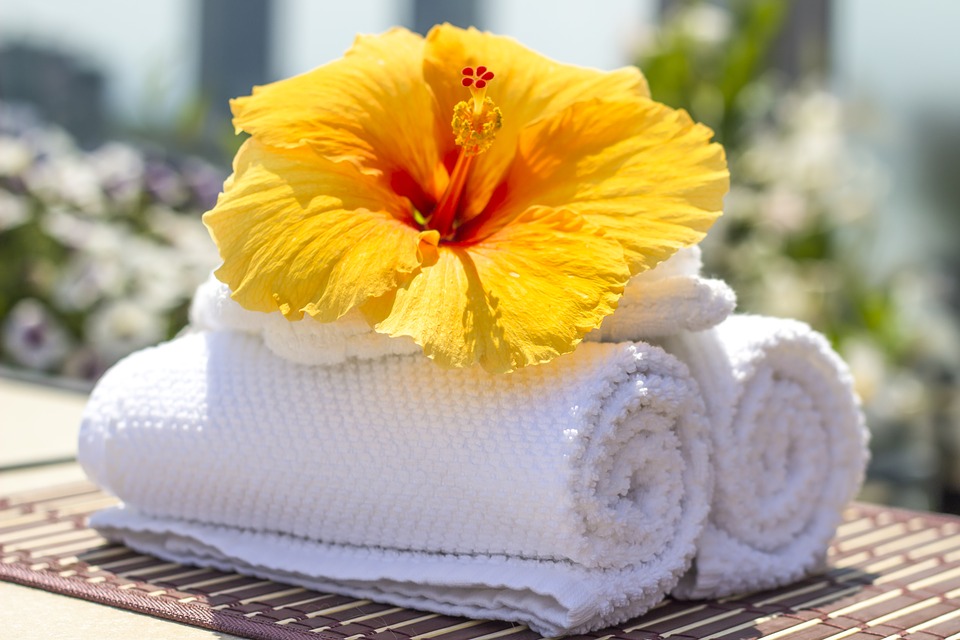The great outdoors is said to be one of the most relaxing places on Earth, full of wildlife, steeped in nature and generally radiating organic tranquillity.
Sadly, the same can’t always be said for our gardens, where wildlife is replaced by plastic kids’ toys, nature is subbed for overgrown weeds and radiant tranquillity makes way for barking neighbourhood dogs and cat mess.
But it doesn’t have to be this way! In fact, creating your very own outdoor oasis can be a lot easier than you think.
With a little imagination, a bit of time and a lot of will power, your gruesome garden could become the nirvana of the neighbourhood in no time.
Here’s how to create your very own outdoor spa in your garden space.

On the bubble
What better place to start in your quest for garden serenity than with the ultimate piece of chill technology – the hot tub.
The pinnacle of outdoor relaxation, the hot tub has been the symbol of summertime leisure for decades, offering an unrivalled setting for alone times and social gatherings alike.
However, hot tubs have also been seen as a symbol of status as well and with very good reason – hot tubs don’t come cheap! That being said, there’s no denying they are worth the investment.
On the other hand, if you don’t happen to have a swag bag of thousands lying around gathering dust, there are economical alternatives. Inflatable hot tubs – like the Lay-Z-Spa – can be found at a far more affordable price.
Lay the foundation
If you do decide to opt for a hot tub, you’ll need a designated area to house it. An exposed spa in the middle of a marshy wasteland doesn’t exactly scream “decadence”, so start by laying a base for your new home spa with a fitting flooring option.
At AlfrescoPlus, we recommend either capped composite decking or porcelain paving tiles for their superior moisture control and water-resistance. Naturally, these watery capabilities make either surface ideal for the task at hand.
Capped composite decking comes in protective polymer sleeve that is virtually impervious to moisture, while porcelain is made for slip-resistance and built to withstand spills and splashes while maintaining grip and traction.
Whichever surface you settle on, either one would make a fantastic flooring solution that’s ideal for housing a hot tub.
Take cover
Now that we have our hot tub and flooring planned out, it’s worth considering a cover for your outdoor spa area.
British weather can be pretty unpredictable at times and, at others, completely unforgiving. There’s nothing fun or relaxing about sitting in the rain, so cover your back by covering your head.
Meanwhile, even if you don’t mind the rain creeping in, you’ll certainly mind a neighbouring peering in. An awning or veranda can provide elemental shelter and heightened privacy simultaneously.
Meanwhile, shelter in the form of wood fencing, trellis and naturally high growing plants can provide additional privacy and seclusion, while also adding to the natural ambience of your garden spa space.
Take a seat
As amazing as it is to relax in the comfort of a hot tub in the outdoors, doing so for too long can pose many risks. Meanwhile, too much of anything can lose its appeal, so an alternative option can act as a welcome break.
Creating a seating area within your outdoor space can provide you with the perfect spot to soak up a rare bout of sun and unwind with a relaxatory beverage of your choice. Whether this is part of the same area as your hot tub or another patch entirely is up to you.
If budget and space allow, this could make for the perfect opportunity to create an outdoor lounge area separate from your hot tub, capitalising on the garden trend of zoning while adding to your overall spa ambience.
Choose a fitting flooring surface in keeping with your theme and adorn with compatible garden seating and loungers. Accessorise with a water feature for the ultimate complimentary area to complete your garden spa sanctuary.
For more information about our products and how to transform your outdoor space into a home spa haven, give us a call on 0800 028 8756 or send us an email using the link below.
Get in Touch